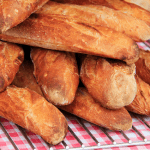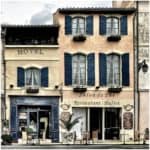From Paris to Provence, here’s how to answer the question: what is France famous for?
Sophisticated food, haute couture clothes, cabarets, and cinemas – France is a culture carousel that never stops. Wondering what France is famous for? Where do we begin? This is the most visited country in the world, a place whose history has influenced the world. Some of
To help you understand why, we’ve compiled a list of all the elements that make France a fascinating place to visit. So, keep reading to learn more about this captivating country before packing your bags and embarking on your French adventure.
The Most Famous Things in France
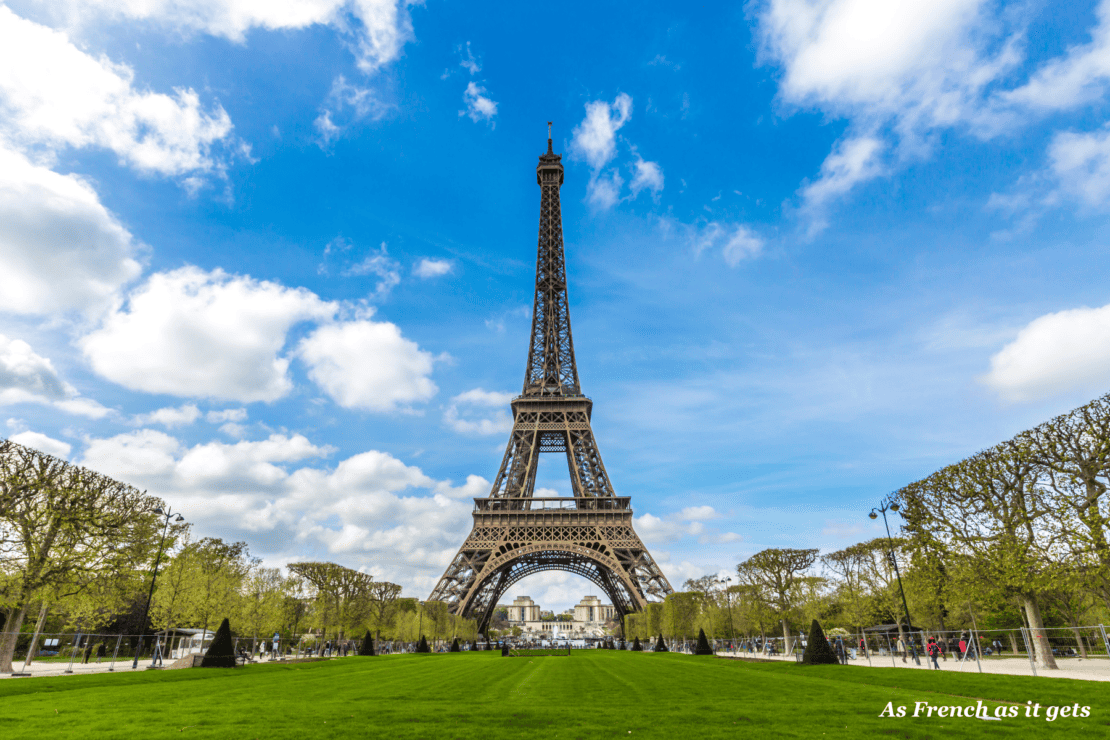
The Eiffel Tower
For most people, the Eiffel Tower equals France. This “Iron Lady” is the most photographed attraction in Paris, with almost 7 million tourists coming to see it every year.
Originally constructed as a temporary exhibit for the 1889 World’s Fair, the tower’s elaborate design, consisting of over 2 million rivets, was a remarkable feat of engineering that went on to defy critics and sceptics.
Initially, the tower was supposed to be demolished after 20 years, but Gustave Eiffel managed to save his artwork by convincing the French government to use it for scientific purposes.
This way, besides serving as a popular tourist attraction, the tower has also played a significant role in science and technology, functioning as a wireless transmission site during World War I and aiding in radio and television broadcasting afterwards.
You can also admire the tower at night, when it is illuminated with 20,000 light bulbs, creating a spectacular and unforgettable sight.
For more on what to do in the French capital, check out our four-day Paris itinerary, and consider enhancing your museum visits with a paris-museumpass.com.
Louvre Museum
The Louvre doesn’t need any introduction. In fact, it may be the only art museum that everybody in the world has heard about. And there’s no wonder, considering its size (over 60,600 square meters) and rich history.
Originally constructed as a fortress in the 12th century, the museum later was the residence of French monarchs before becoming home to a wonderful art collection during the French Revolution.
Today, you can see more than 35,000 artworks on permanent display, including famous works like Leonardo da Vinci’s Mona Lisa and Eugène Delacroix’s Liberty Leading the People.
Apart from the art, you can also explore the Louvre Pyramid, a modern glass and metal structure designed by I. M. Pei in 1981. Despite initial controversy, the pyramid has become a beloved landmark and serves as the main entrance to the museum, housing an information centre and cafeteria.
Musée d’Orsay
Another famous art centre in France, the Musée d’Orsay displays, among others, the works of the French impressionists and post-impressionists, such as Van Gogh, Renoir, and Monet. The location is quite spectacular: the museum sits within in a 19th-century former railway station.
To fully enjoy the Musée d’Orsay, you’ll need at least 4-5 hours. The museum is arranged in chronological order across three main levels, with smaller display rooms in between. The ground floor is divided into two main parts, featuring sculptures from the mid-19th century and paintings from the pre-Impressionist era. Here, you’ll find works by Delacroix, Benouville, Pissarro, as well as some by Monet and even Picasso.
Not to be missed are the huge works of art by Gustave Courbet, including the famous painting that started shaking the establishment – The Origin of the World. There are also smaller rooms with exquisite furniture and an interesting 3D replica of Central Paris, complete with Opera Garnier right beneath your feet.
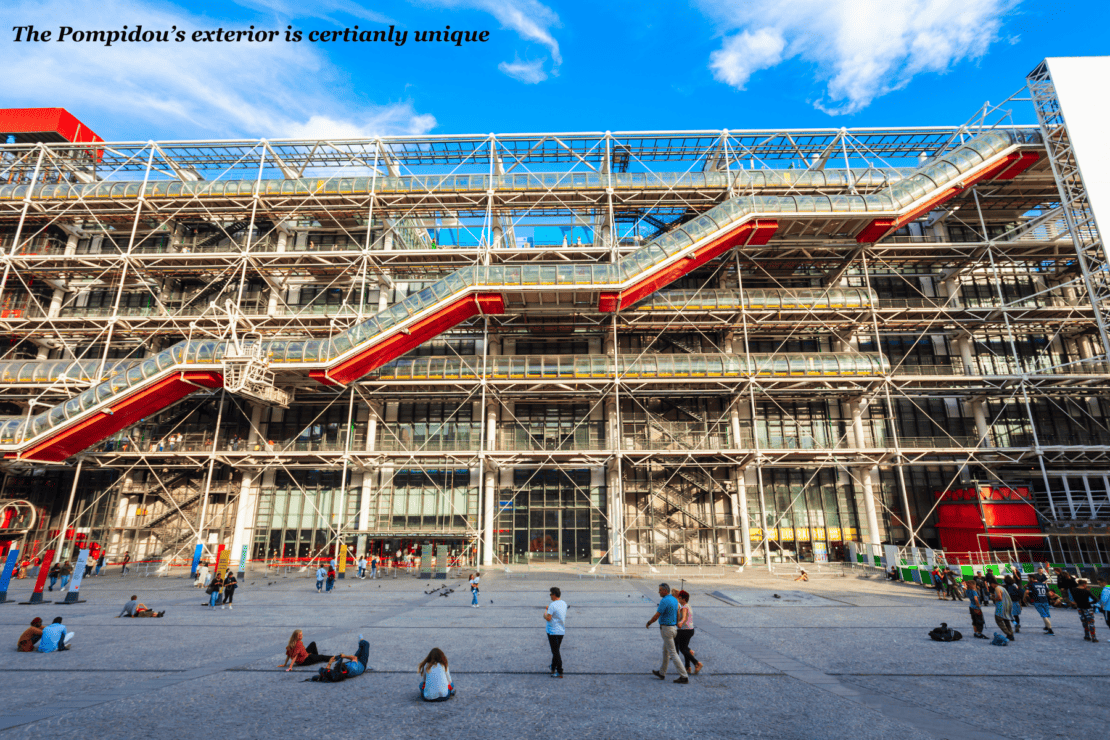
Centre Pompidou
When in Paris, you’ll immediately spot the Pompidou Centre by its unusual exterior, with red tubes that serve as a large escalator to move people in and out of the building. The building’s unique design, with all its electrical wires, plumbing, pipes, and air circulation elements outside, colour-coded for easy identification, perfectly matches the museum’s modern and diverse theme.
The Pompidou Centre has one of the biggest collections of modern and contemporary art in France and is a must-see destination for every committed art enthusiast.
Stand and admire the artworks of Henri Matisse, Pablo Picasso, and Juan Miró or head up to the sixth floor of the Centre Pompidou for an unforgettable view of Paris. You can admire the panoramic views of the city, including landmarks like the Eiffel Tower and the Sacre-Coeur Basilica from here. And if you’re feeling hungry, the Mezzanine Café and Restaurant Georges can provide some sustenance while you’re enjoying taking in the views.
- Recommended reading: what is Croatia famous for?
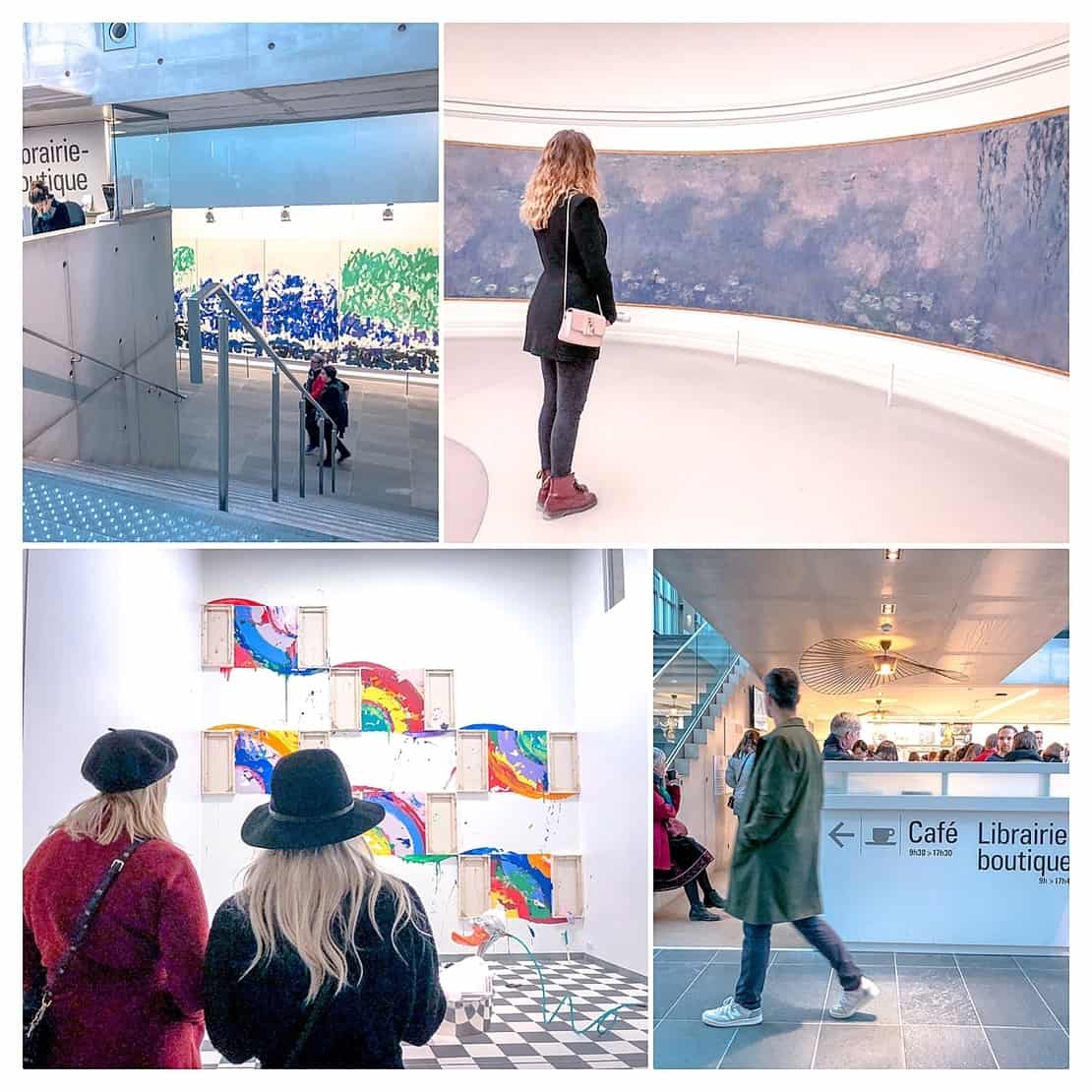
Musée de l’Orangerie
Not quite as famous as the Louvre, but a wonderful place nevertheless, is the Musée de l’Orangerie at the west end of Jardin des Tuileries near the famous Place de la Concorde.
Originally built in 1852 to store citrus trees from the Jardin des Tuileries, the building was eventually used for public events, including art displays and concerts.
In 1921, the French government gave the building to the Under-Secretariat of State for Fine Arts, along with another building called Jeu de Paume, with the intention of creating a space for living artists to display their works.
The most famous works exhibited at Musée de l’Orangerie are Claude Monet’s Water Lilies series, located in two oval rooms that together make an infinity symbol. It’s one of my favourite places in Paris,. Take your time in each room, admiring the elaborate details of the paintings up close and standing back to take in the greater scene.
In addition to the Water Lilies series, the museum also has a permanent collection featuring works by artists such as Paul Cézanne, Henri Matisse, and Auguste Renoir, as well as rotating exhibitions showcasing other great artists, including early photographers.
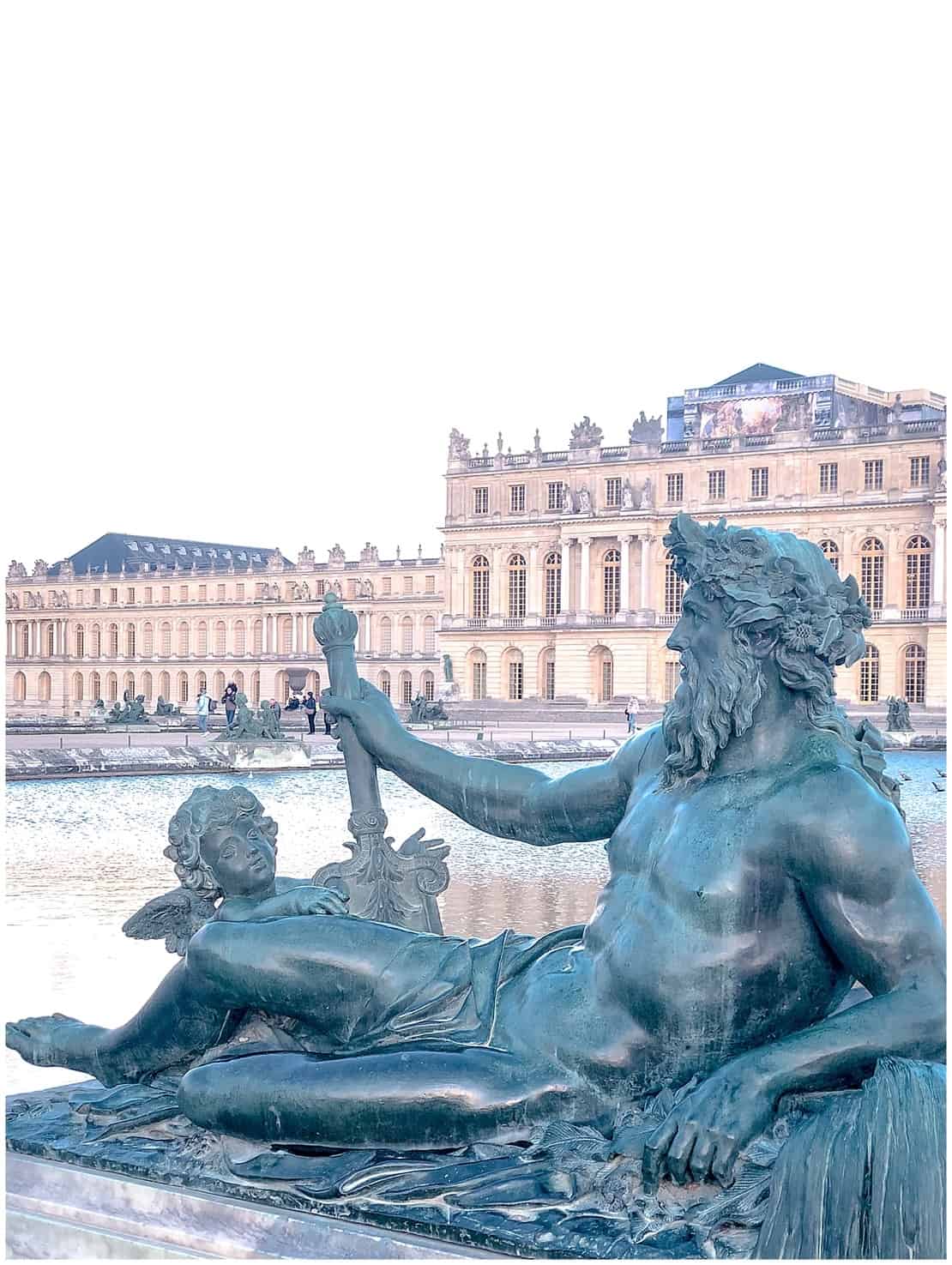
Palace of Versailles
With jaw-dropping architecture and endless gardens, the Palace of Versailles stands for France itself. Today a UNESCO World Heritage Site, the building was the primary residence of the Kings of France for over 100 years.
The palace began as a hunting lodge and was transformed into a lavish country estate by Louis XIV, also known as the Sun King. By moving the court to Versailles, Louis XIV diminished the power of the French nobility, who were forced to spend more time away from their regional homes.
The gardens cover a vast tract of land and are filled with sculptures and fountains. The Main Palace features over 2,300 rooms, including the Hall of Mirrors, Marie-Antoinette’s bedrooms, and the King’s Apartments and Royal Bedchamber.
The Trianon Estate, consisting of the Grand and Petit Trianon, is less crowded than the main palace but equally stunning.
And, lastly, the Queen’s Hamlet, a rustic retreat built for Marie Antoinette in 1783, provides a glimpse into the private life of the former Queen.
Notre Dame Cathedral
Yet another famous French landmark, the Notre Dame Cathedral on the picturesque Île de la Cité, continues wow the crowds despite the devastating fire in 2019.
Built in the 12th century, it underwent restoration between 1845 and 1870, after being used as a bread store during the French Revolution. Then, fire struck in 2019.
At the time of writing, you can’t enter inside due to ongoing restoration work. But you can still admire the cathedral’s exterior from the square, in all its stained glass and gargoyle glory.
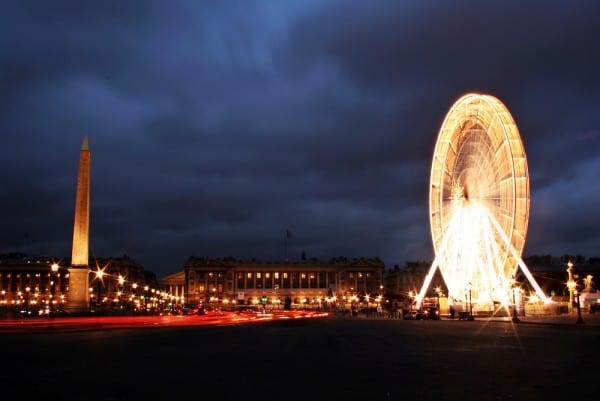
Place De La Concorde
Almost every tour of Paris starts in Place de la Concorde, the largest square in the city, which is located right in the centre.
Originally a swamp, the land was transformed by Louis XV, who commissioned the building of Place Louis XV at the west end of the Tuileries. However, during the French Revolution, the square was renamed Place de la Revolution, and a guillotine was erected in place of the statue of Louis XV. Over 1,300 people, including Louis XVI and Marie Antoinette, were executed here. In 1795, the square was renamed Place de la Concorde, which means harmony or peace. It’s a lot less grisly.
The square is famous for its obelisk of Luxor, the oldest monument in Paris, gifted to Louis Philippe by the viceroy of Egypt, Mohammed Ali Pasha. The 23-meter high, 220-ton obelisk was transported to Paris after 300 men dug a canal in Egypt to provide shipping access.
The square is also home to groups of sculptures and fountains representing different regions of France, two of which are located north and south of the obelisk, and Pont de la Concorde, a five-arched bridge built from the stones of the Bastille prison, which was completed in 1791 and crosses the Seine at Place de la Concorde.
Pont Du Gard
Located in the Occitane region, this historic aqueduct is the perfect place to take pictures, especially at sunset.
In the 1st century AD, the Romans constructed an aqueduct to transport fresh water from Uzès to Nîmes, spanning 50 km and crossing the River Gardon, with the Pont du Gard being one of its key components. Due to the accumulation of limestone, the aqueduct could no longer be used for water transportation, prompting the Romans to build an extension and transform it into an impressive bridge.
The Pont du Gard stands out for its size, measuring 48m by 275m and being the highest Roman bridge globally. Despite its age, it’s remarkably well-preserved, allowing visitors to walk across the bridge and through the aqueduct itself.
Arc de Triomphe
Built between 1806 and 1836 to commemorate France’s military prowess and Emperor Napoleon Bonaparte’s oversized ego, the arch is decorated with elaborate allegorical sculptures and displays the names of more than 600 French soldiers who fought in the French Revolution and Napoleonic Wars.
The tomb of the Unknown Soldier and the eternal flame can be found under the arch, and you can climb the 284 steps or take an elevator to the mid-level and climb 64 stairs to the top to gaze down at the Champs Elysees from one of the most famous landmarks in France.
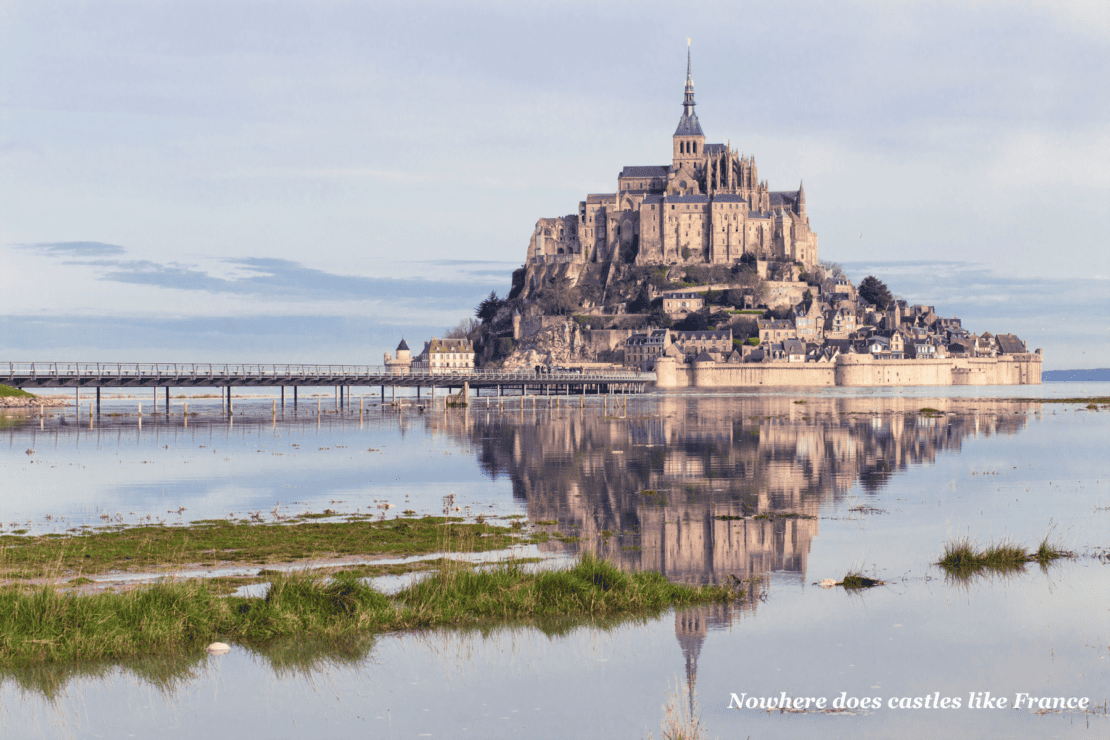
Mont Saint Michel
Located on a tiny island in northern France, this UNESCO World Heritage site rises from the water like a ghost.
Even in cloudy weather, the island is still beautiful with its high and thick walls and causeway to ensure safe access.
Film Culture
France’s passion for filmmaking has resulted in groundbreaking cinema that consistently challenges boundaries. French cinema is renowned for its storytelling, character development, and naturalistic acting, with influential directors like Jean-Luc Godard, François Truffaut, and Claude Chabrol becoming household names in the industry.
The most famous event is, of course, the Cannes Film Festival.
Fashion
France’s fashion history stretches back through the centuries.
From Louis XIV to Paul Poiret, French fashion has always leaned towards the extravagant. During Marie Antoinette’s era, ruffles were all the rage as fashion signified wealth and social status, while after the French Revolution, fashion trends shifted dramatically, and society adopted a more working-class uniform.
However, this rejection of opulent fashion would turn out to be a trend itself. Fuelled by France’s imperial rule and obsession with exoticism, fashion looked further afield for inspiration in the early 20th century. Enter Paul Poiret, who spun Eastern influences into fantastical haute-couture creations. Coco Chanel, Christian Dior, Yves Saint Laurent, and Louis Vuitton further revolutionised the fashion industry with their innovative designs.
Today, Paris Fashion Week has become the centre of France’s extravagant fashion scene. However, even in their daily lives, the French, particularly the Parisians, continue to set fashion trends.
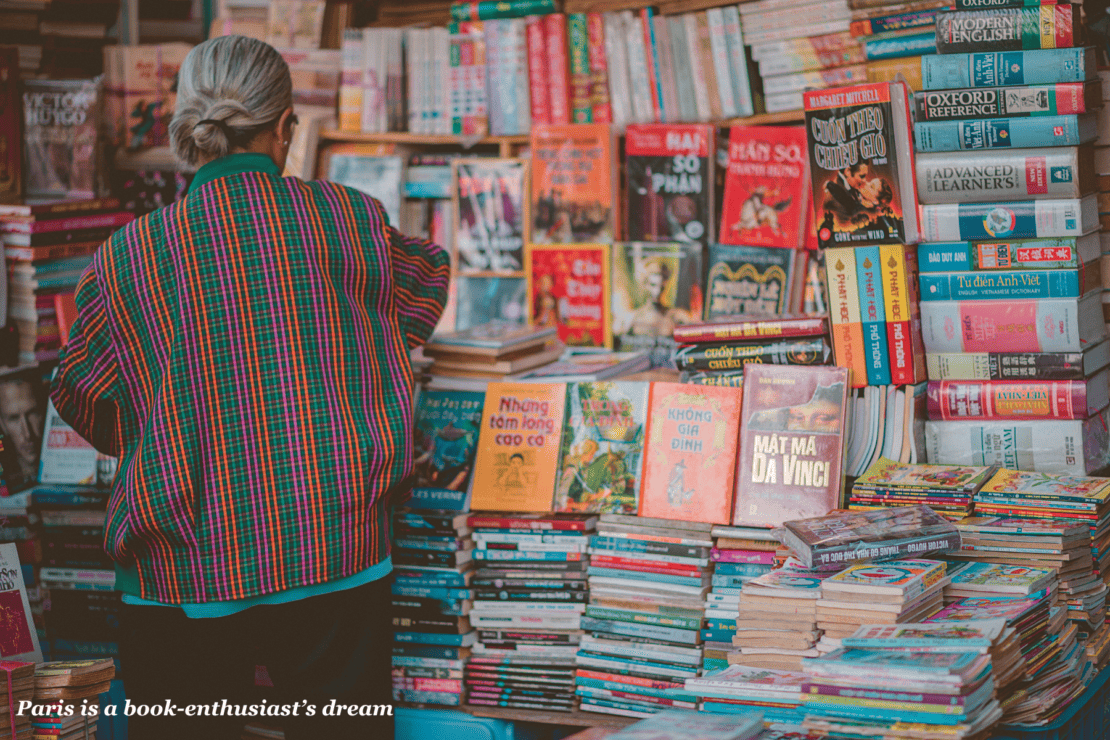
Literature
From medieval epic poems like “The Song of Roland” to the contemporary works of authors like Michel Houellebecq, French literature has always been rich and diverse, encompassing a wide range of styles, genres, and themes.
Paris is a literary haven, with literary hotspots across the city. You can visit the bookstalls that line the river Seine, and which have done since the 16th century. Alternatively, shop at Shakespeare and Company, where famous international writers like Allen Ginsberg and James Baldwin used to buy their books when in Paris.
For museum lovers, the Maison de Victor Hugo, the former residence of the famous French writer, is now open for visiting. The Musée de la Vie Romantique is another notable site where you can learn about the literary history of writers like George Sand.
Other literary hubs in Paris include Café de Flore, Harry’s New York Bar, Maison de Balzac, The American Library in Paris, and La Closerie des Lilas. These establishments are popular among writers and provide an ideal setting for discussing their craft.
French Wine
Some say that ordering a beer in a French restaurant is a crime. While that’s not exactly true, it is fair to say that France is famous for its wine.
French wines are renowned for their unique characteristics, influenced by the elevation, climate, and winemaking techniques used. French winemakers focus heavily on the terroir of their wines, with each parcel of land having a distinct personality and producing a distinct final flavour.
The best way to discover the wines of France is to take a guided tour around its famous wine regions like Bordeaux or Champagne, among castles and endless vineyards.

French Cuisine
From gourmet dishes to hearty quiches and stews and even the simple but delicious baguette, French cuisine is a major attraction when visiting France.
Its roots can be traced back to the Middle Ages when nobility dined on multi-course meals with wild game, meat, fruit, and grains, while peasants had a diet high in vegetables and legumes. With an emphasis on fresh ingredients, formal techniques, simple flavours, and elaborate presentation, French cuisine became the foundation for many other culinary styles.
The spread of French cuisine was helped by Francois Pierre La Varenne’s publication of the first French cookbook in 1651, which inspired chefs to record their work, and the French Revolution in 1789. Haute cuisine, meaning “high cuisine,” shifted French cooking from an emphasis on abundance and quantity to an emphasis on quality and moderation.
Auguste Escoffier further modernised French cuisine, adapting it to be more accessible . He refined the fundamentals of cooking, including food presentation and service, with his publication of Le Guide Culinaire in 1903 and his innovative brigade de cuisine system.
France is famous for many dishes, including well known coq au vin and boeuf bourguignon. And the croissant (although that does not actually come from France.)
The French Language
Yes, even the French language is famous! Sharing its roots with Latin, it stands out as a fascinating Romance language alongside Italian and Spanish.
This language is spoken across the world, second only to English, with official status in numerous countries. It is the only language, alongside English, that is taught in every country globally.
Sports
France has a strong passion for sports and a long history of success.
Football is the most popular sport, with over 1.8 million registered players, and the national team, Les Bleus, has won a FIFA World Cup, UEFA European Championships and produced legendary players like Zinedine Zidane and Michel Platini.
Rugby Union is also loved by the French, winning 16 Six Nations Championships, and basketball has seen success with FIBA EuroBasket 2013 and two Olympic silver medals.
Moreover, every year, the country hosts the Tour de France, attracting around 12 million people.
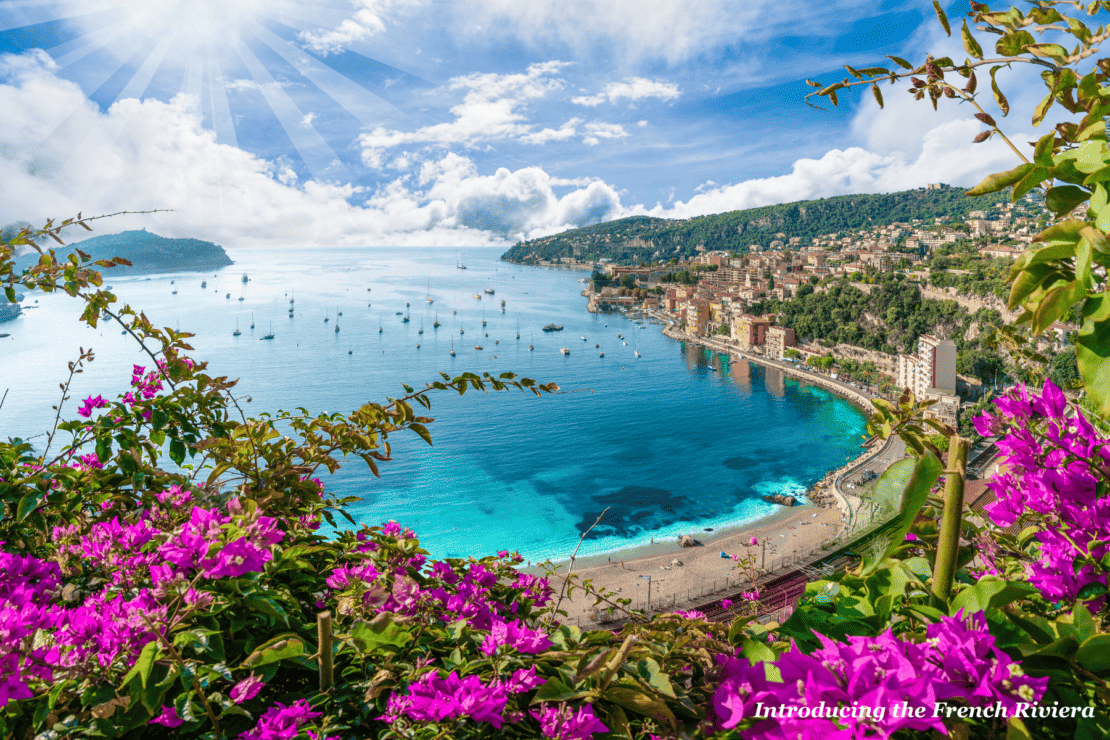
The French Riviera
France has one of the most glamorous holiday destinations on earth: the French Riviera along the Cote d’Azur. This gorgeous place in Southern France was once a quiet fishing area, but it became a go-to health resort for British aristocrats and royalty looking to escape the cold winters of the north.
Nowadays, the French Riviera boasts has elegant boulevards, high-end restaurants, and chic hotels alongside historical monuments.
Tip: Events in Fitzgerald’s “Tender is the Night” take place on the French Riviera, so bring the book with you for a more authentic reading experience.
The Loire Valley
The Loire Valley overflows with sunflower fields, bustling markets, world-class wines and pristine gardens. It has been the chosen retreat of French kings and aristocracy for hundreds of years, and its popularity with the elite has left its lush countryside sprinkled with fairy-tale chateaux, such as Château de Chambord.
Driving through the Loire Valley in summer is a pleasure. In addition to the standard fresh food markets, the Loire Valley also offers markets that sell everything from second-hand books and vintage furniture to truffles and flowers.
Enjoy the river on a boat trip from Nantes or from one of the many chateaux that line its banks. Discover historic towns and cities with cobbled streets, ancient cities, and chateaux at every turn. Or, for something different, head to Gien to see its 14th-century ramparts or to Vendôme to see its pristine parks.
Mont Blanc
Mont Blanc or the “White Mountain” is the highest mountain in the French Alps.
Today, over 20,000 tourists head to its highest point annually, facing treacherous winds of up to 150 kph and bone-chilling temperatures as low as -40°C. From the summit, the sweeping vistas of the Jura, the Vosges, the Black Forest, and the Massif Central unfold like a reward.
If you are not much of a hiker, a cable car can take you to certain points of the mountain, so you can enjoy the views without feeling exhausted at the end. Mont Blanc is also one of the best places in Western Europe for skiing, with lots of resorts welcoming tourists as soon as the first snow falls.
Disneyland Paris
Europe’s very own version of Disneyland is located just 30km outside Paris and is the 13th most popular theme park in the world.
Aside from the fantastic rides and iconic characters, you can also enjoy the spectacular night show, Disney Illuminations, which includes amazing light projections and fireworks.
Plus, the park is conveniently located near Paris, so you can take a break from the park to explore the city’s famous landmarks and indulge in French delicacies.
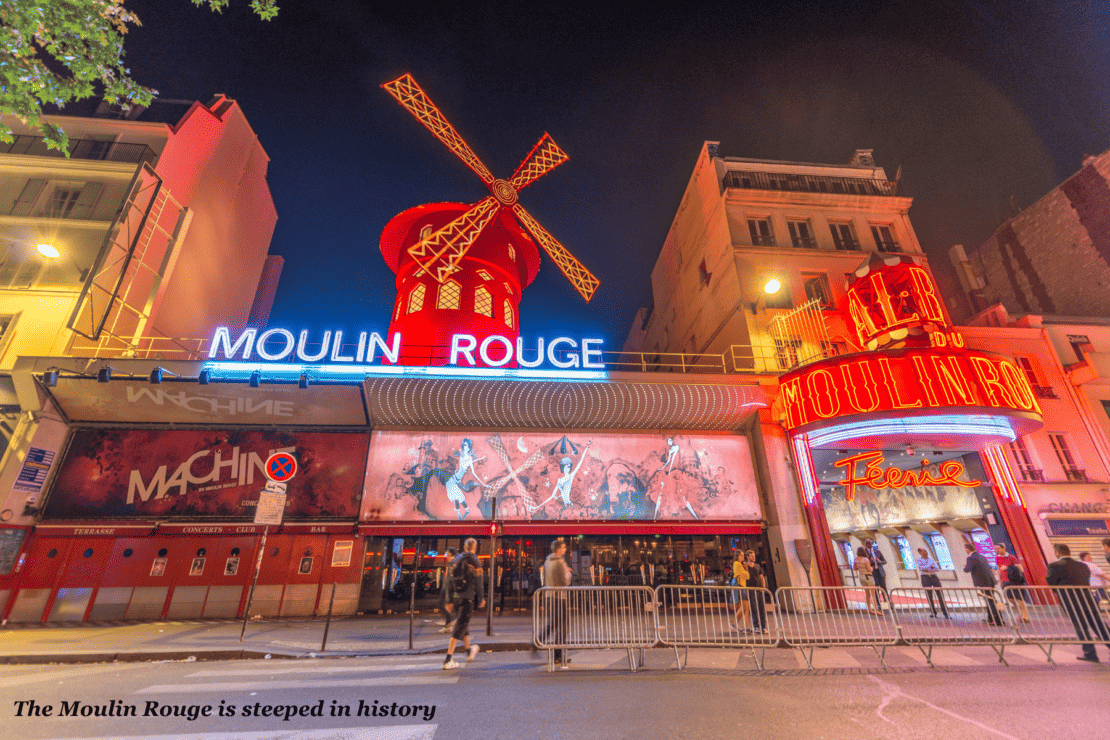
Moulin Rouge
The Moulin Rouge is a well-known Parisian landmark that often seems to lack significant reasons to visit, aside from its fame. Although it may appear to be an old establishment holding onto its glory days, the history of the Moulin Rouge highlights its importance in the city of Paris.
Did you know that the Moulin Rouge was the first building in Paris to use electricity for aesthetics? The building’s designer, Adolphe Léon Willette, had always envisioned the space powered by bright red lighting inside and on the exterior, and his vision was brought to life when the city of Paris granted the building access to electricity every evening after 10 pm.
The same electric red lighting can still be seen by night at the Moulin Rouge. The club was first built in 1885 and later burned down in 1915, leading to six years of closure. Today, what visitors see is the result of the refurbishments.
Aside from being the birthplace of the Can-Can dance and one of the last remaining windmills in Montmartre, the Moulin Rouge is also home to some of the finest cabarets that Paris has to offer.
With strict dress code rules in place, you can dress up for the occasion and experience a night of elegance and entertainment in the same place that once served as a scene for Edith Piaf and Liza Minelli.
Provence
Provence in southeastern France is a sunny and picturesque region that has attracted artists over the centuries. The region is famous for its Provençal rosé, and its numerous vineyards, local markets, and museums. The region is also famous for its lavender, which blooms between the last week of June and the beginning of August and turns acres of land purple.
Head to Avignon, which was the seat of the Catholic popes in the 13th century to find the largest Gothic palace in the world, Palais des Papes. The city also hosts the Festival d’Avignon, France’s largest performing arts festival.


